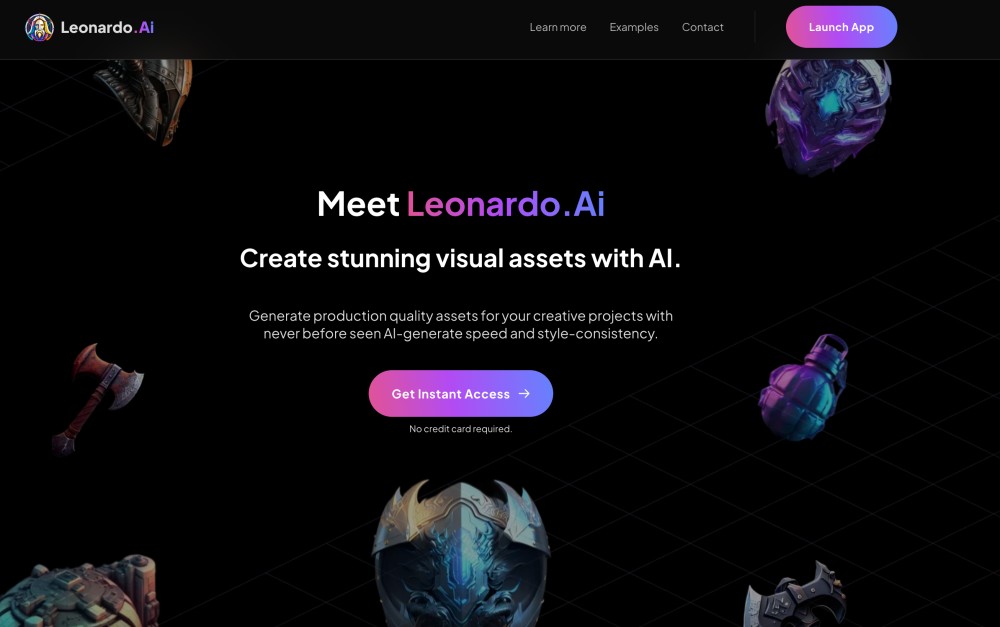Leonardo AI - What is it and How to Use it?
Leonardo AI is an image generator tool that helps users create visually appealing pictures using simple prompts.
But is it the same as Midjourney, Starry AI, DreamStudio, and the rest of the bunch?
Not quite!
Leonardo AI’s unique features set it apart from other AI image-generating tools.
This article will dive deep into its features and explain how to use it properly.
Let’s start!
What is Leonardo AI?
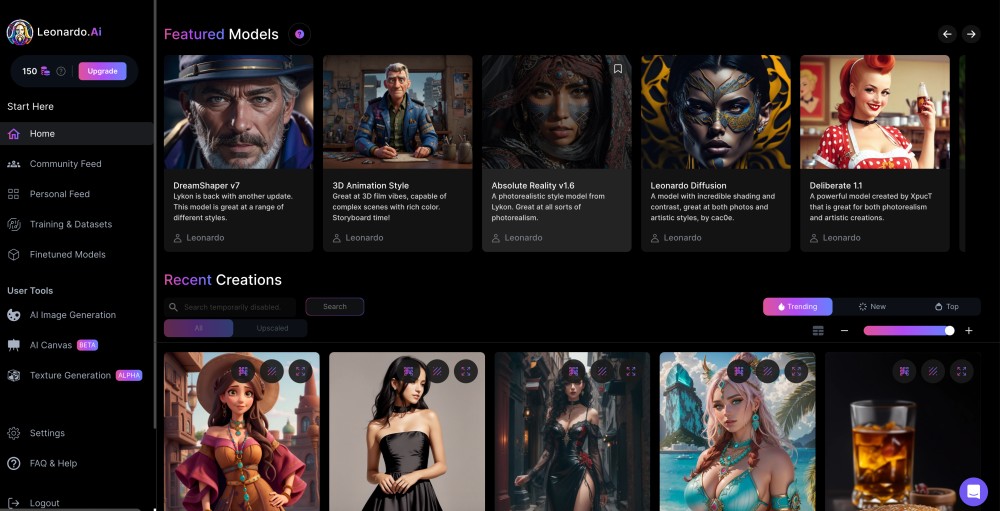
Leonardo AI aims to become a “one-stop-shop” that includes all sorts of generative AI on one platform and links them together logically and cohesively.
Their initial focus was on 2D asset and image generation, providing model finetuning, stylistic consistency, and control; however, there are plans for rapid expansion, including 3D capabilities.
Moreover, the company wants to be at the forefront of integrating all the new things that are becoming available, so it has a team of 30 people (at the time of writing) to accomplish that.
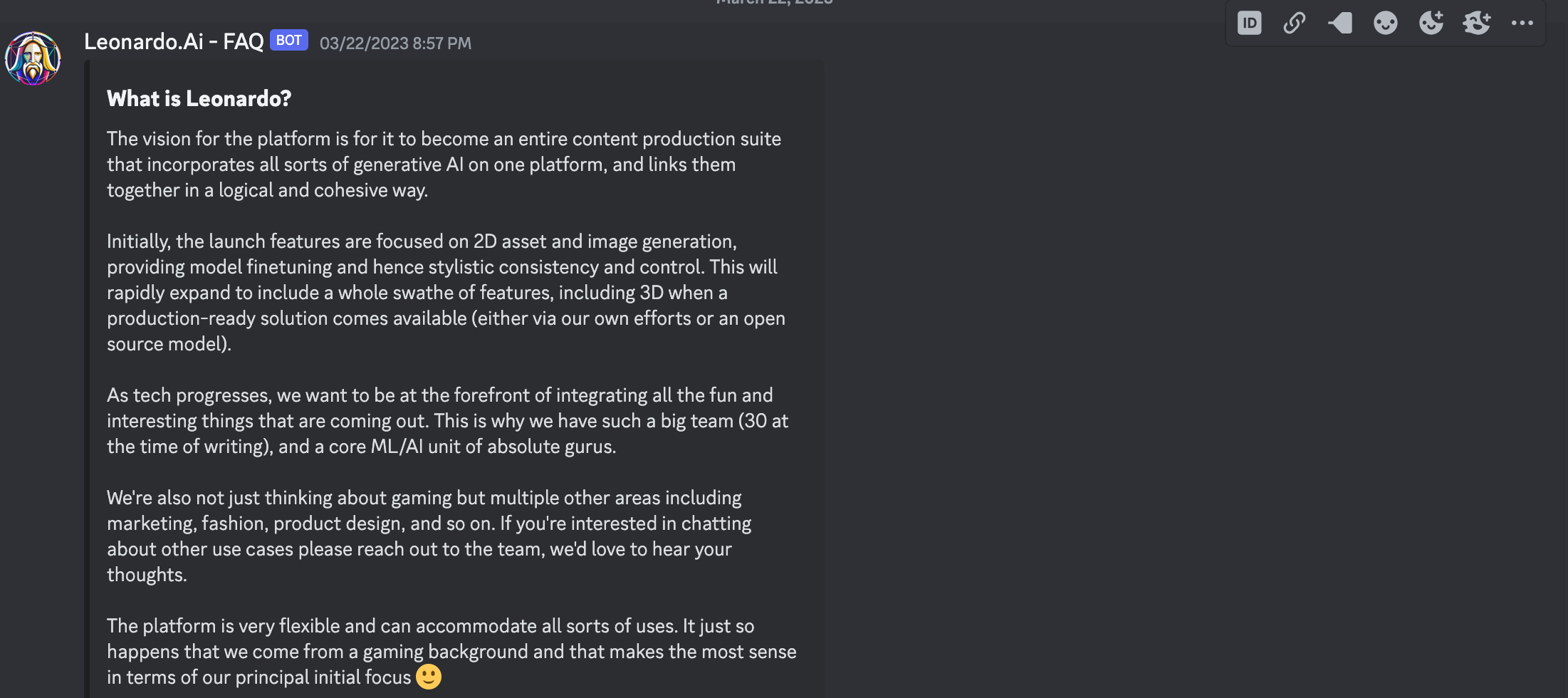
How to join Leonardo AI
- Click the “Get Instant Access” button on their official website.
- You will need to provide your email address and name.
- Leonardo AI will send you a registration email. Keep in mind that it may take several minutes to receive the message.
- Click the ‘Login’ button, fill in the form, and click ‘Sign in.’
How to use Leonardo AI
Leonardo AI is a multi-featured platform that allows users to generate images with the help of AI.
It has three main tools powered by AI:
- AI Image Generator.
- AI Canvas.
- AI Texture Generation.
In this section, we will break down the platform and explain everything step by step.

Leonardo AI’s AI Image Generator
Before we dive into creating images with Leonardo AI, let's examine each feature separately and understand its purpose so we know when to use them.
Leonardo AI Image generator features
- Set the number of Images. This option allows you to select how many images you want the tool to generate.
- Image Dimensions. This option allows you to set the image dimension.
- Guidance Scale - Use this to determine how strongly your prompt is weighted.
- Step Count: You can select the number of steps to create your image. Keep in mind that a higher step count will take longer to generate.
- Tiling: Enabling this toggle will make the generations tileable, perfect for creating textures and backgrounds.
- Negative prompt. The negative prompt option allows you to exclude things you don’t want in the image.
- Download, unzoom, remove background, upscale, use image to image, edit in Canvas, and delete the image.
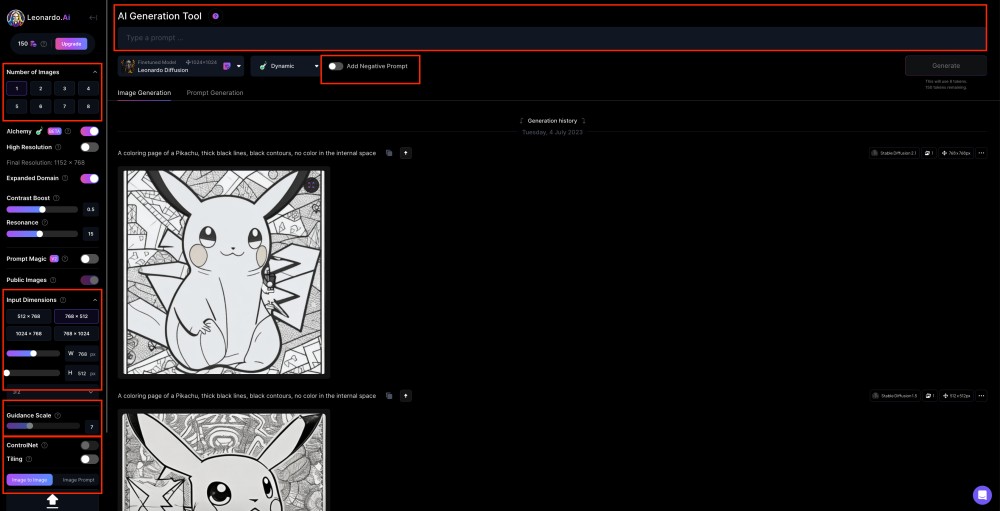
Advanced settings
- Alchemy. Alchemy is a feature that is currently in the beta phase. It enhances the existing platform models by providing high-fidelity image generation and coherence.
- High Resolution. Users can boost their resolution by toggling the button for this feature.
- Expanded Domain. Users can increase prompt adherence with this option. But also, as explained by Leonardo AI, the risk of visual anomalies goes up.
- Contrast Boost. Adjusts the contrast in the image.
- Resonance. Adds more detail with the resonance feature.
- Prompt Magic. Improves the output on any chosen model.
- Prompt Magic Strength. How strongly the prompt magic feature will influence the output.
- High Contrast. Add more shadow to give a moody feeling to your images.
- Image 2 Image. Copies the prompts from the premade images.
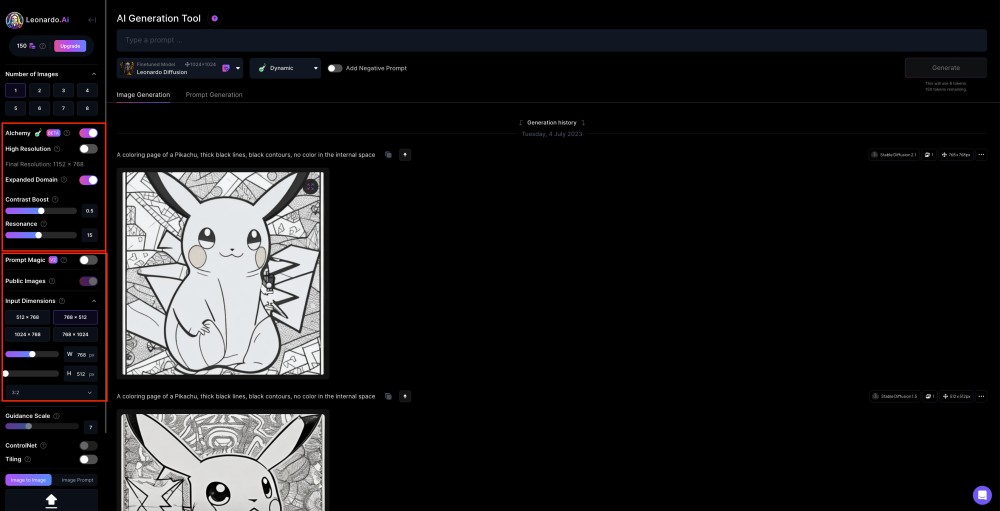
Creating images with Leonardo AI image generator
- Click the ‘AI Image Generation’ button from your 'Home' page from the left.
- Write a prompt in the text box.
- Adjust the settings from the left-hand menu if you need to achieve a specific effect or set the number of images you need.
- Click on the “Generate Image” button.
- Hover over the photo to Upscale the image, Unzoom it, or download it.
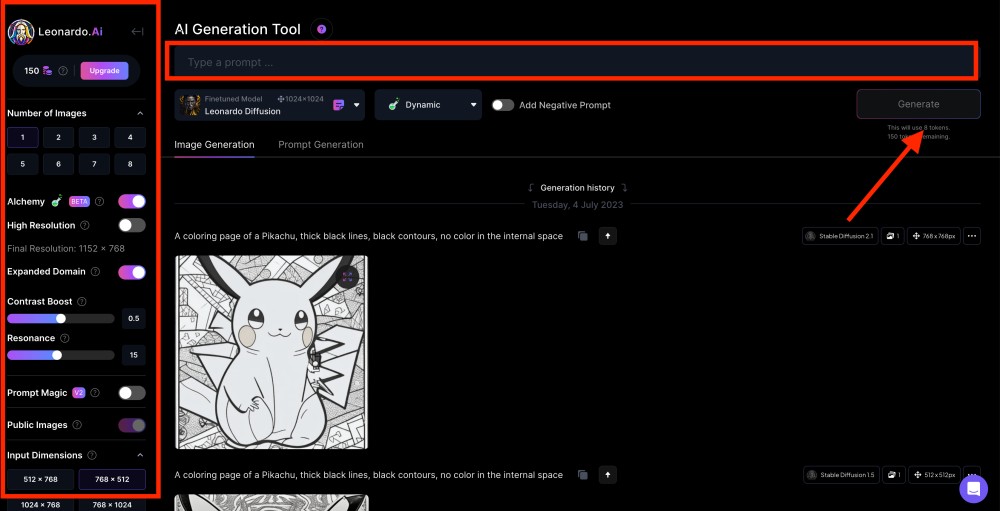
An additional way of creating images with Leonardo AI is by selecting a finetuned model that works as a "style" that's applied to your image.
- Select a finetuned model by clicking on the Finetune models option.
- Select the model and click on Generate with this model.
- The platforms will redirect you to the AI image creator. From here, you can adjust the settings from the left-hand menu if you need to achieve a specific effect or set the number of images you need.
- Click on the “Generate Image” button.
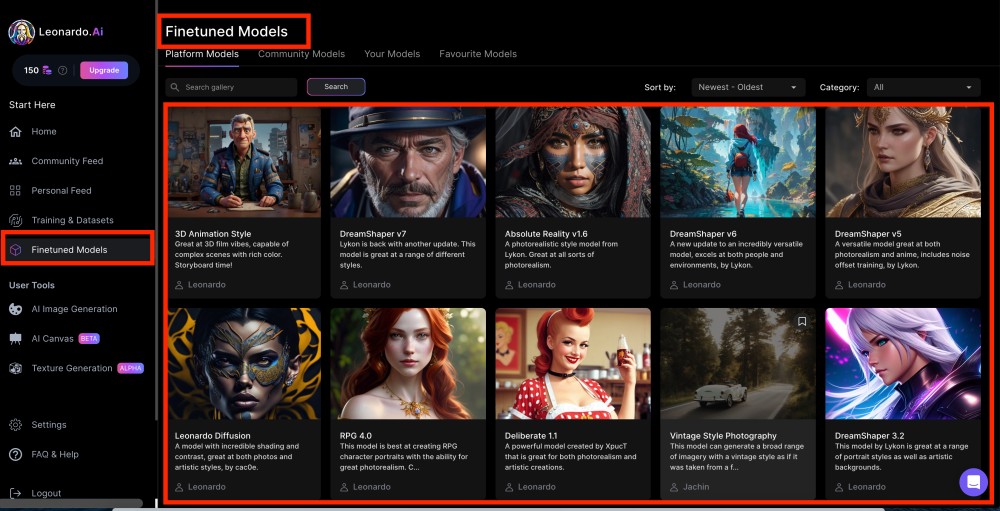
Leonardo AI Canvas
The Leonardo AI Canvas Editor is a highly advanced tool that enables users to create, edit, and enhance their images using AI.
Users can modify their images precisely, eliminate undesired elements, and produce new content using in and outpainting techniques.
This part of Leonardo AI is handy for people who need more training in Photoshop or for users who don’t have the time to start learning complex editing software.

How to use Leonardo AI Canvas
- Upload an image by clicking the ‘Upload button.’
- To move elements around, click on the ‘Select’ button.
- The 'Pan' tool moves around the canvas and views different parts of the image.
- To modify or refine certain parts of an image, you can use the 'Draw Mask' button on the toolbar. Upon applying the mask, you can input a prompt for the image and generate the changes to the masked area.
- Using the ‘Erase’ button lets you quickly delete unwanted objects of the image.
- The ‘Prompt’ option allows adding different objects in the image using a simple prompt.
- Once you are done, you can ‘Download’ your work by clicking the download option.
Leonardo AI 3D Model Texture Generation
Leonardo AI offers a special tool to create realistic textures for 3D models. This tool enhances the visual quality of your projects, whether you're working on games, architectural visualizations, or product design. It adds depth and realism to your 3D models by generating high-quality textures.
Train your model with Leonardo AI
Leonardo AI provides a unique opportunity to enhance your control and customization capabilities by enabling you to train your AI generation models.
With the help of your own uploaded images and datasets, you can improve the accuracy and broaden the capabilities of your models.
This feature particularly benefits those with specific artistic styles or unique requirements.
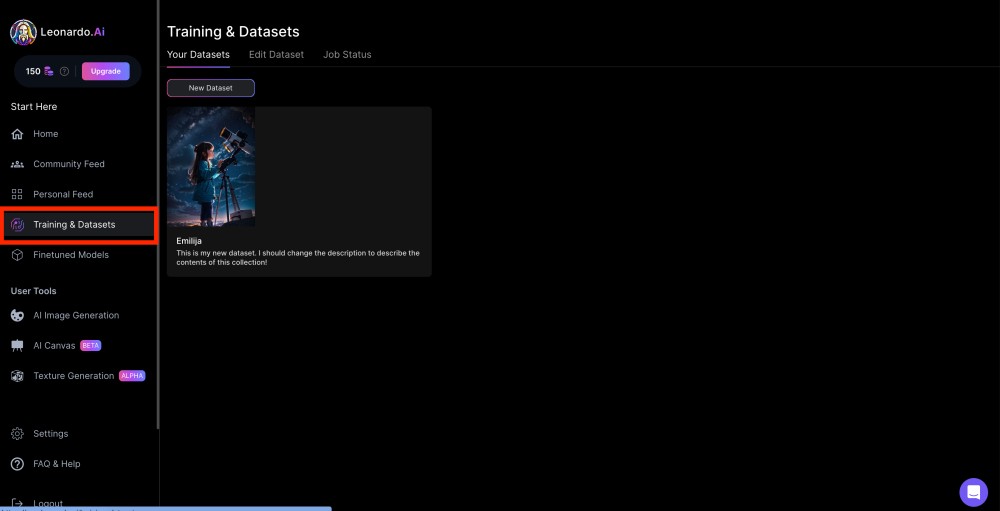
How to train your model with Leonardo AI
Create a Dataset
- Access the Leonardo AI website.
- Go to "Training & Datasets" and select "New Dataset."
- Name your dataset.
- Upload or select images to include in your dataset.
Train Your Model:
- Click on “Start Training” to start the training process.
- Provide metadata information for your model.
- The model will be finetuned based on your dataset and Stable Diffusion as the base model.
Access and Generate Images:
- Once you complete training, find your model in the "Fine Tuned Models > Your Models" section.
- Click on your model to generate new images.
- Use prompts or instructions to guide the image generation process.
Leonardo AI pricing plans
If you intend to generate more than 150 images per day using Leonardo, you must opt for one of the other pricing plans.
Otherwise, you can use Leonardo for up to 150 generations daily for free.
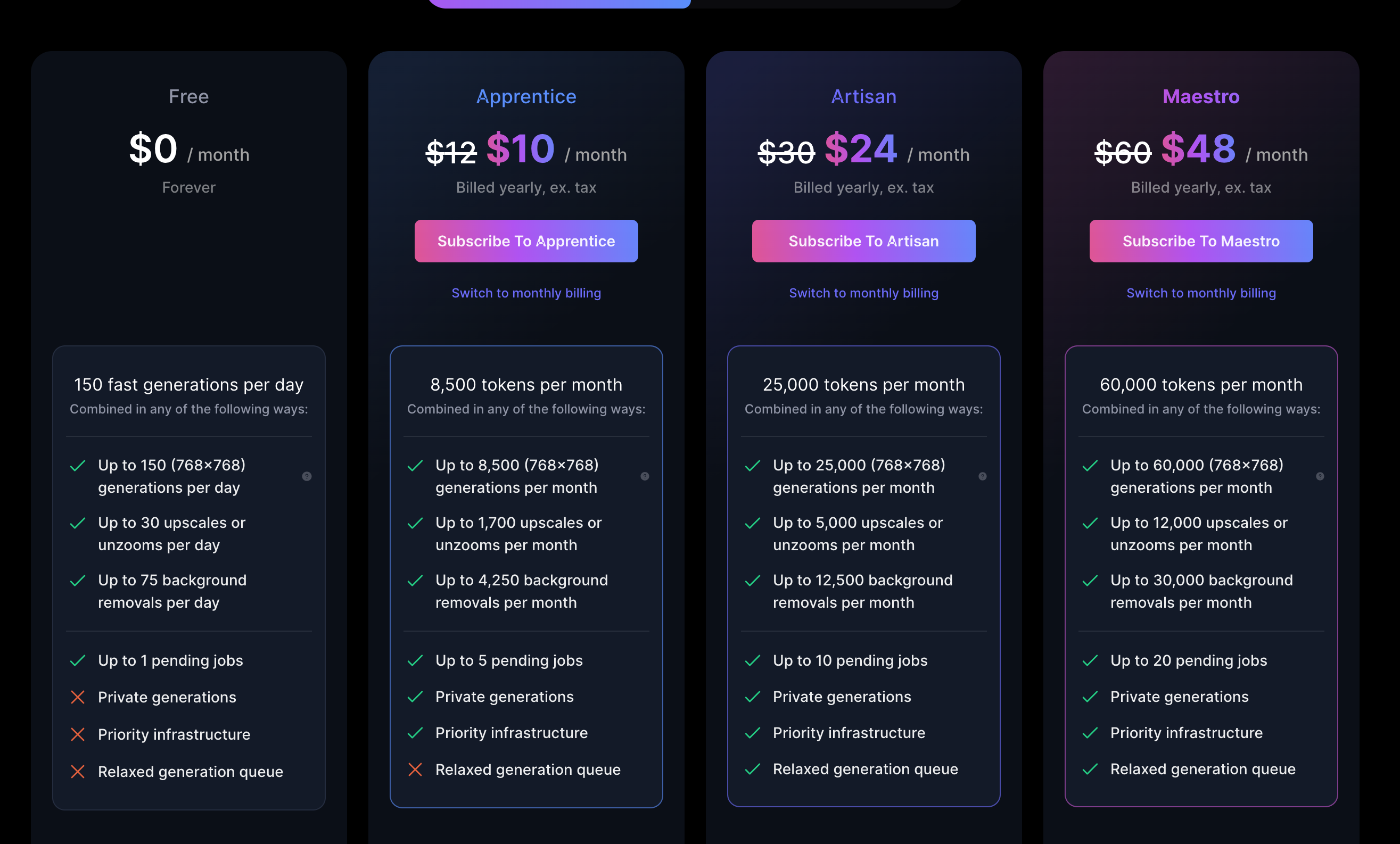
To sum Up
The Leonardo AI platform provides various options to create and edit images using AI.
It's a one-stop shop for users to experiment with various features and create high-quality images.
Its unique features set it apart from similar tools, making it a highly sought-after tool.
We hope this guide has helped you understand and use the tool more efficiently.

